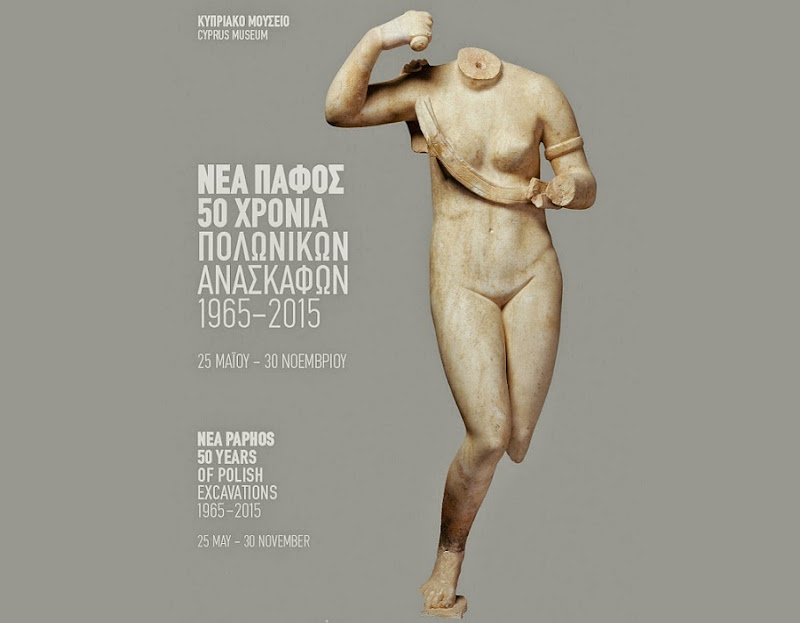The Department of Antiquities, Ministry of Transport, Communications and Works, announces the opening of the temporary exhibition “Nea Paphos: 50 Years of Polish Excavations, 1965-2015” at the Cyprus Museum, on the 25th May 2015 at 19.00. The exhibition is organised within the framework of the celebrations of International Museum Day and the European Night of Museums.

The year 2015 marks the 50th anniversary of Polish excavations at Paphos. The exhibition, which is organized by the Department of Antiquities and the Polish Centre of Mediterranean Archaeology (University of Warsaw) presents to the public, for the first time, a large part of the results of half a century of archaeological investigations of the Polish archaeological mission in the city of Paphos.
The University of Warsaw’s excavations at the site of ancient Nea Paphos (Kato Paphos) began in 1965 with Kazimierz Michałowski as the first director of the mission. Since then, the excavations continue on a yearly basis, apart from 1974, the date of the Turkish invasion of Cyprus. The Polish archaeological mission’s director from 1966 to 2007 was Professor Wiktor Andrzej Daszewski and from 2008 to this day the excavations are led by Dr Henryk Meyza. In 2011, a second archaeological mission from Poland (Jagiellonian University, Kraków) continued the excavations of the ancient Roman Agora, under the direction of Professor Ewdoksia Papuci-Władyka.
Up until the first half of the 1960’s, when Dr. Kyriakos Nikolaou of the Department of Antiquities, began excavations at the House of Dionysos, ancient Paphos was hardly known. In 1963, following an invitation by Dr. Nikolaou and the Director of the Department of Antiquities, Dr. Vasos Karageorghis, Professor Kazimierz Michałowski of the University of Warsaw visited Paphos and chose a site adjacent to the Cypriot excavations for future investigations. The Polish excavations that followed greatly enriched and expanded our knowledge on the archaeology of Nea Paphos. It was proven that this ancient city was designed following the Hippodamian town-planning system (grid-system), as were most important cities of the Hellenistic period.
Furthermore, the excavation of luxurious villas, such as the House of Theseus, the House of Aion, the so-called Hellenistic House and of other buildings and the discovery of impressive moveable finds, demonstrated the high level of artistic achievement in this ancient city. The study of the archaeological finds revealed Paphos’ extremely important role in the history of Cyprus and its central position in the economic, commercial and military world of the ancient eastern Mediterranean. The numerous studies and post-doctoral theses related to ancient Paphos placed the city at the centre of scientific interest.
The exhibition at the Cyprus Museum includes finds from the luxurious villas and from public buildings, such as vessels, coins, sculpture and figurines. The exhibition’s highlight is the armed Aphrodite (Hoplismene), a unique example of this type in Cyprus. In a specially designed room, the marvelous mosaics, which adorn the floors of Nea Paphos’ ancient villas, will be projected. Objects that provide us with information on the ancient city’s town planning as well as its water supply will be exhibited along with reconstructed architectural members from a public building. These architectural members reveal the variety of architectural styles that coexisted in the city.
The Polish archaeological mission of the University of Warsaw at Paphos is the oldest ongoing archaeological mission in Cyprus and continues its scientific quests with the same zeal and energy. The recent arrival of the Jagiellonian University of Kraków has brought additional dynamism to current research activities, signifying Poland’s great interest in retaining and enhancing its scientific ties with Cyprus.
Source: Republic of Cyprus, Ministry of Interior [May 15, 2015]